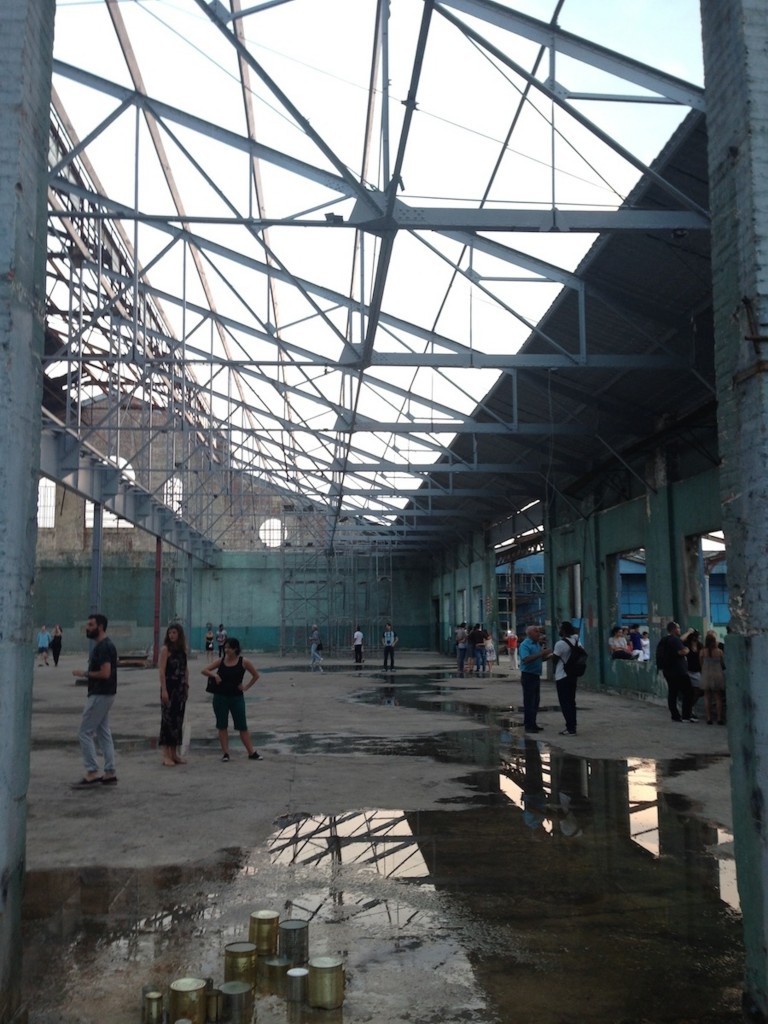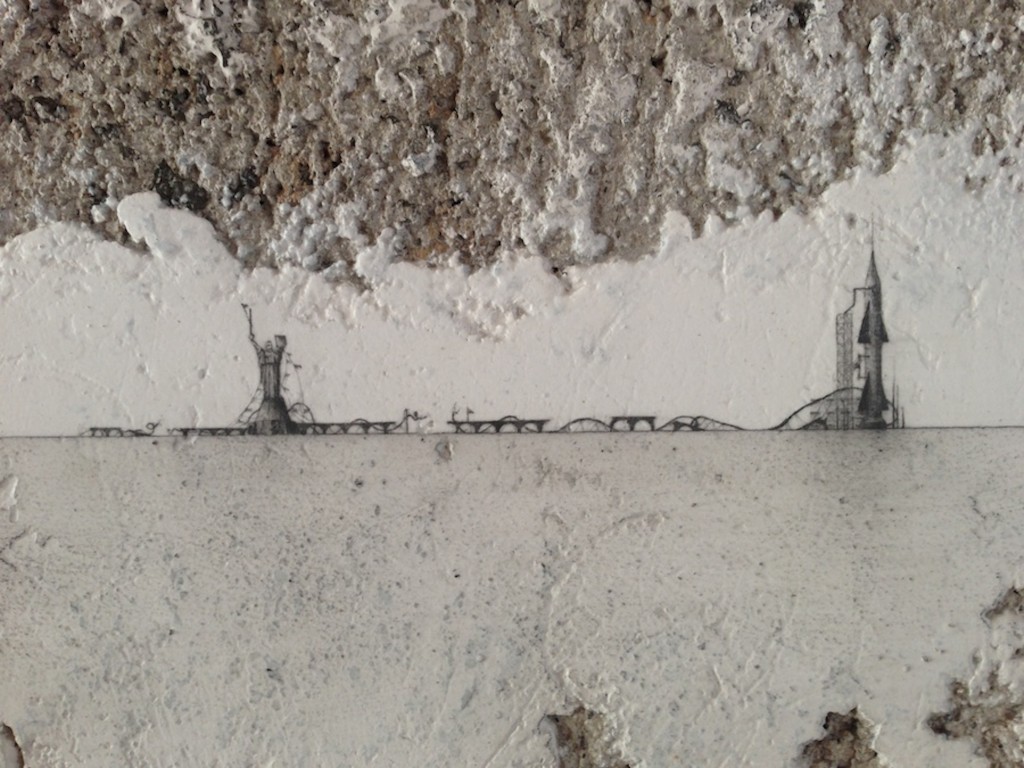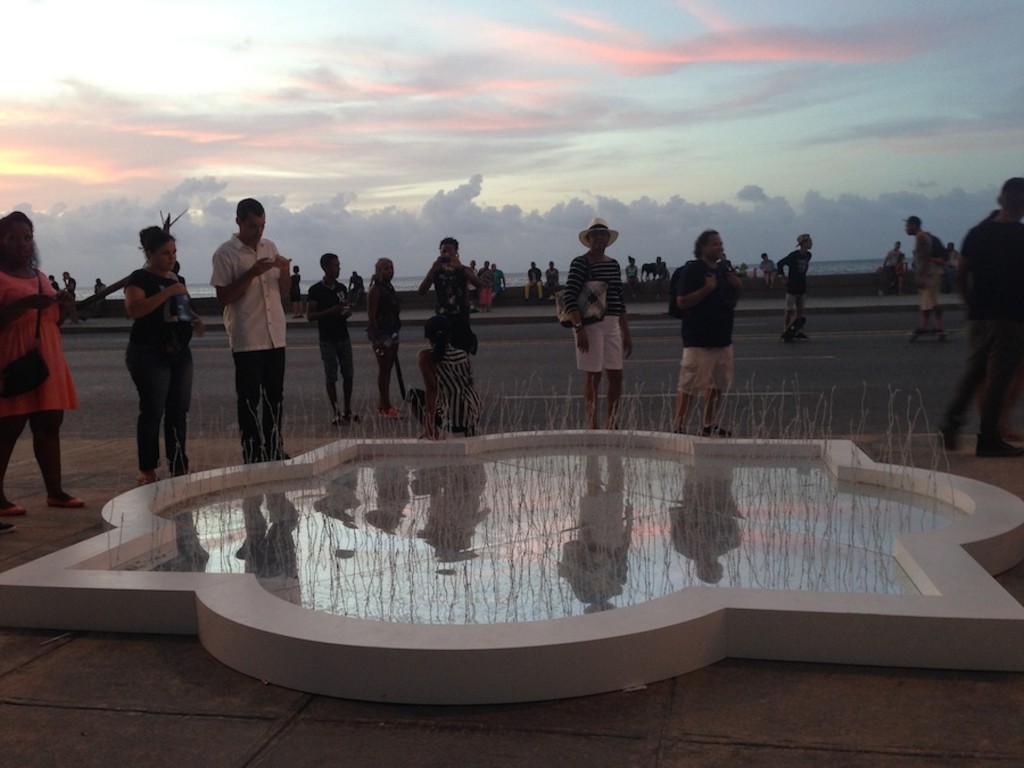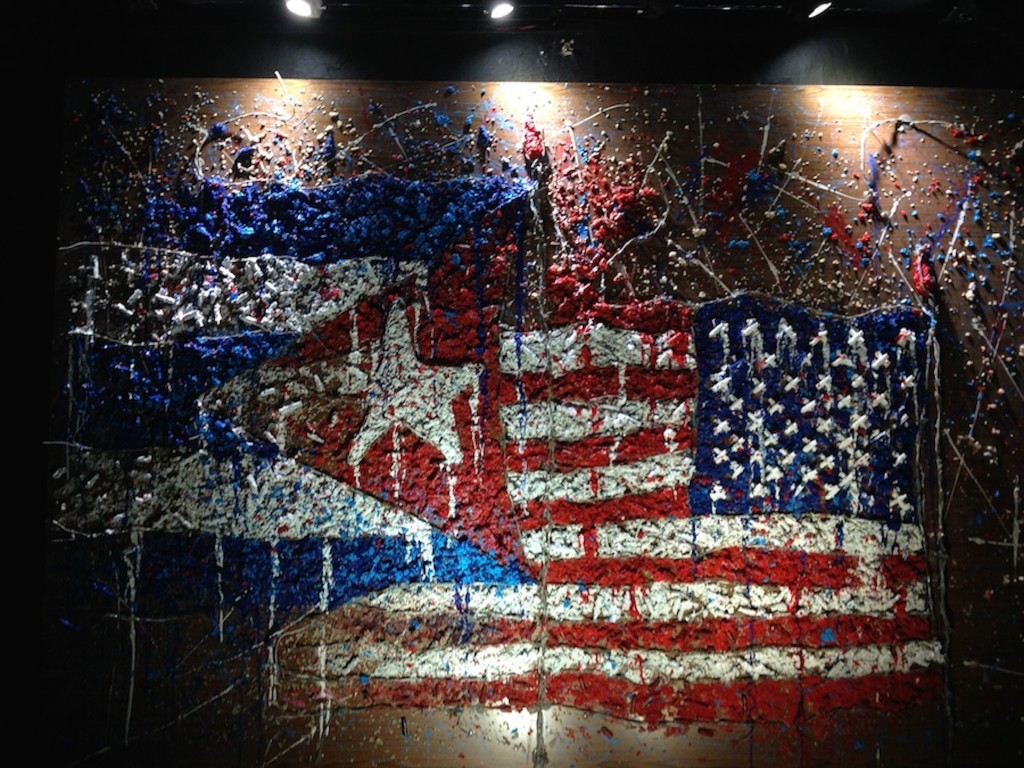The air buzzed with excitement outside the Factoría Habana in Havana Vieja. Cubans and people from around the world, gathered outside the gallery, eagerly awaiting the opening. Right away, art aficionados dressed in trendy outfits, streamed into the building. Within minutes, the entire gallery was full of people looking at art, chatting with friends, taking pictures, and listening to the woman DJ spin music.
I couldn’t believe I was at a cool gorgeous art gallery, full of cool, gorgeous people right in the center of Havana. Everywhere I looked, I saw young fashionistas admiring the art from hanging iPads to a giant sign made with plastic rulers.
Change is happening in Cuba. During the 12th Havana Biennial this year art galleries and museums displayed never-before seen work. One of the most interesting scenes was along the Malecón, a popular sea-facing stretch of road where people gather to enjoy the view. For the biennial it became a massive outdoor art gallery featuring everything from an ice skating rink to a fountain with barbed wire.
In Havana, art was on display everywhere from a dilapidated bicycle factory to fancy art galleries! In the words of an organizer on the festival’s website, “It won’t be a Biennial for collectors or gallerists, but rather to make a connection with the city. There will be no official opening or specific venues; art will spill out of the galleries, bursting into the streets which will be bubbling with ideas.”

A former bicycle factory turned into an art gallery during the 12th Havana Biennial.
On my last night in Havana, I met Cuban artist, Rachel Valdés Camejo. She’s the artist behind the magnificent “Blue Cube,” a giant plastic blue box on the Malecón. Upon entering the blue cube, I could see the dark blue ocean and the clouds in the sky above. Rachel explained the inspiration for her cube, along with another installation she has on display at the 18th-century fortress, La Cabaña. She excitedly talked about how this type of art can impact all Cubans. Even though Rachel studied and lived in Spain and the United States, she wants to be a part of the Cuban art scene. She said the Malecón was the perfect venue for people of all backgrounds to view and interact with the art.

Rachel Valdés Camejo’s incredible sound, mirror, and light installation on display at the 18th-century fortress, La Cabaña.
During the biennial, the entire city of Havana became a living art museum. I noticed hidden gems such as a wall full of tiny sketches in an abandoned building. In a former bicycle factory, I saw pieces of silver embedded in the wall. I was impressed that many of the artists stood next to their pieces and eagerly interacted with the audience.

During the 12th Havana Biennial, the entire city of Havana became a living art museum. I noticed hidden gems such as a wall full of tiny sketches in an abandoned building.
Along the Malecón, Moroccan artist Safaa Erruas displayed a Moorish shaped fountain with hundreds of white barbed wire poles emerging from the center. When people looked down into the fountain, they could see a reflection of themselves. She told me that her piece represented borders and “at first, you don’t see the borders, since nothing appears at first as what’s reality.” Her piece emphasized how politics often creates boundaries. Another Moroccan artist, Mounir Fatmi’s installation of poles painted with American flags represented the U.S.-Cuba relationship. I met a curator who told me that many of these art pieces were created before the U.S. and Cuba formally engaged in dialog in December 2014.

Moroccan artist Safaa Erruas displayed a Moorish shaped fountain with hundreds of white barbed wire poles emerging from the center titled, “Fuente de Espinas,” or Fountain of Thorns,” in English.
Many Cuban artists raved about the New York exhibition, “Wild Noise,” which debuted at the National Museum of Fine Arts in Havana (Museo Nacional de Bellas Artes). In this exhibition, The Bronx Museum gathered more than 80 pieces from American artists. It was an amazing experience to see this collection from New York debut in Cuba for the first time in fifty years!
The Havana Biennial represents a Cuba that is quickly changing. This year, over 200 artists from 44 countries across Latin American, Africa, the Caribbean, and the United States presented their art pieces in Havana to the world. Cuba is such a fascinating country and I hope to visit again for future art and culture celebrations.

Art piece displaying U.S. and Cuba flags at the Zona Franca exhibition, held inside the 18th-century fortress, La Cabaña during the 12th Havana Biennial.
The Havana Biennial runs until June 22.